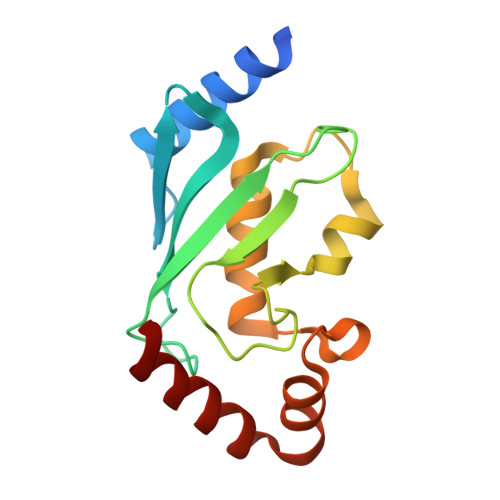Autoinhibition Mechanism of the Ubiquitin-Conjugating Enzyme UBE2S by Autoubiquitination.
Liess, A.K.L., Kucerova, A., Schweimer, K., Yu, L., Roumeliotis, T.I., Diebold, M., Dybkov, O., Sotriffer, C., Urlaub, H., Choudhary, J.S., Mansfeld, J., Lorenz, S.(2019) Structure 27: 1195-1210.e7
- PubMed: 31230944
- DOI: https://doi.org/10.1016/j.str.2019.05.008
- Primary Citation of Related Structures:
6QH3, 6QHK - PubMed Abstract:
Ubiquitin-conjugating enzymes (E2s) govern key aspects of ubiquitin signaling. Emerging evidence suggests that the activities of E2s are modulated by posttranslational modifications; the structural underpinnings, however, are largely unclear. Here, we unravel the structural basis and mechanistic consequences of a conserved autoubiquitination event near the catalytic center of E2s, using the human anaphase-promoting complex/cyclosome-associated UBE2S as a model system. Crystal structures we determined of the catalytic ubiquitin carrier protein domain combined with MD simulations reveal that the active-site region is malleable, which permits an adjacent ubiquitin acceptor site, Lys +5 , to be ubiquitinated intramolecularly. We demonstrate by NMR that the Lys +5 -linked ubiquitin inhibits UBE2S by obstructing its reloading with ubiquitin. By immunoprecipitation, quantitative mass spectrometry, and siRNA-and-rescue experiments we show that Lys +5 ubiquitination of UBE2S decreases during mitotic exit but does not influence proteasomal turnover of this E2. These findings suggest that UBE2S activity underlies inherent regulation during the cell cycle.
Organizational Affiliation:
Rudolf Virchow Center for Experimental Biomedicine, University of Würzburg, 97080 Würzburg, Germany.















